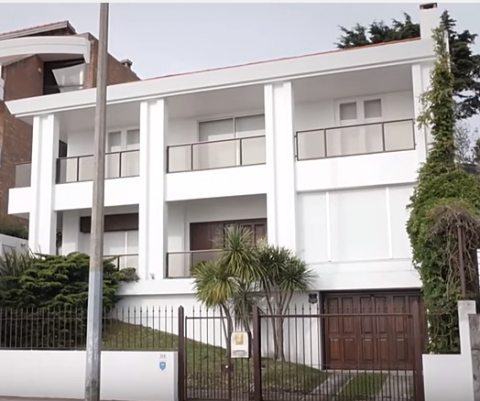Casona de Punta Gorda
Summary
Data
Alias
"Infierno chico", "La casona", "300 Carlos r"
Type of place
Location
Country
Address
Rambla República de México 5515
Institutional responsibility
Servico de Información y Defensa (SID)
Operating period
1974 - 1976
Current situation
Casa particular
Place ID
SMLG-UYMO-31
Related victims
| Ficha de víctima #332 - Zina Figueredo, Gastón |
| Ficha de víctima #331 - Petrides, Marta |
| Ficha de víctima #330 - Lubián Peláez, Víctor Hugo |
| Ficha de víctima #329 - Soto Loureiro, Ariel Rogelio |
| Ficha de víctima #328 - Salvo Sánchez, Ana María |
| Ficha de víctima #326 - Rodríguez Larreta Piera, Enrique Carlos |
| Ficha de víctima #325 - Rama Molla, María Elba |
| Ficha de víctima #324 - Nogueira Pauillier, Raquel |
| Ficha de víctima #323 - Zahn Freire, Edelweiss |
| Ficha de víctima #322 - Cadenas Ravela, Alicia Raquel |
| Ficha de víctima #321 - Díaz Berdayes, José Félix |
| Ficha de víctima #319 - Anzalone Cantoni, Laura Haydeé |
| Ficha de víctima #314 - López Burgos, Sergio Ruben |
| Ficha de víctima #311 - Dean Bermúdez, Eduardo |
| Ficha de víctima #315 - Maceiro Perez, Asilú Sonia |
| Ficha de víctima #317 - Michelini Delle Piane, María Margarita |
| Ficha de víctima #318 - Quadros Herrera, Ana Inés |
Ficha de víctima #316 - Méndez Lompodio, Sara Rita  |
| Ficha de víctima #310 - Altuna Facal, Raúl Luis |
| Ficha de víctima #307 - Gayoso Jauregui, Cecilia Irene |
| Ficha de víctima #305 - Soliño Platero, María Mónica |
| Ficha de víctima #300 - Rodríguez Larreta Martínez, Enrique (hijo) |
| Ficha de víctima #293 - Pérez Lutz, Elizabeth |
| Ficha de víctima #290 - González Cardozo, Jorge Raúl |
| Ficha de víctima #260 - Nores Montedónico, María del Pilar |
| Ficha de víctima #196 |
| Ficha de víctima #191 - De Negri, Mario Nino |
| Ficha de víctima #195 |
| Ficha de víctima #92 - Brum Cornelius, Hector Daniel |
| Ficha de víctima #98 - Hernández de García, Mirta Yolanda |
| Ficha de víctima #97 - García Hernández, Amaral |
| Ficha de víctima #96 - García Larrosa, Floreal Guadalberto |
| Ficha de víctima #95 - Estefanell Guidali, Graciela Marta Epifania |
| Ficha de víctima #94 - Corbo Aguirregaray de Brum, María de los Ángeles |
| Ficha de víctima #93 - Abreu, Julio |

